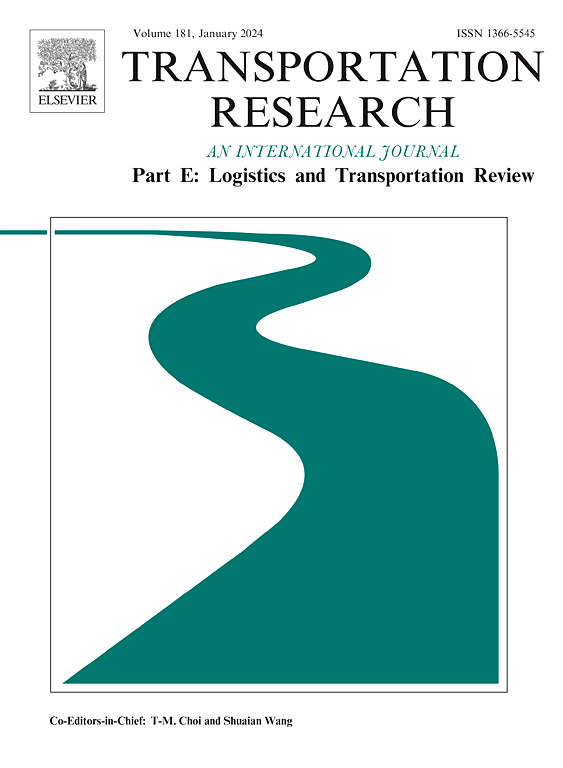利用 3D 打印技术对灾前设施选址问题进行分布式稳健优化
IF 8.3
1区 工程技术
Q1 ECONOMICS
Transportation Research Part E-Logistics and Transportation Review
Pub Date : 2024-11-05
DOI:10.1016/j.tre.2024.103844
引用次数: 0
摘要
三维打印技术的不断进步为应对救灾行动中的挑战提供了一种创新方法。通过利用各种打印材料,3D 打印机可以生产出救灾所需的重要救灾资源,有效满足灾后出现的各种需求。本文探讨了灾前和灾后人道主义行动的联合优化问题。鉴于自然灾害具有很大的不可预测性,我们引入了一个两阶段分布稳健优化模型,以应对各种救灾资源需求的不确定性。该模型的第一阶段涉及灾前设施选址、3D 打印机部署和资源分配等相关决策。第二阶段模型涉及灾后救援活动,包括救援资源的生产和运输决策。为解决需求不确定性问题,我们提出了一个使用瓦瑟斯坦度量的模糊集,并将两阶段分布式稳健优化模型重新表述为一个可操作的公式。为了解决这个问题,我们采用了带有加速策略的本德斯分解算法。我们通过实际案例评估了所提模型和算法的性能。数值实验表明,我们的分布稳健优化模型在各种指标上都优于基准模型。此外,我们还进行了一系列效果分析,为参与救灾行动的决策者提供了管理见解。本文章由计算机程序翻译,如有差异,请以英文原文为准。
Distributionally robust optimization for pre-disaster facility location problem with 3D printing
The ongoing advancement of 3D printing technology provides an innovative approach to addressing challenges in disaster relief operations. By utilizing a variety of printing materials, 3D printers can produce essential disaster relief resources needed for disaster relief, effectively satisfying the varied demands that arise after disasters. This paper examines the joint optimization of pre-disaster and post-disaster humanitarian operations. Given the significant unpredictability of natural disasters, we introduce a two-stage distributionally robust optimization model to tackle the uncertainty in the demand for various relief resources. The first stage of the model involves decisions related to pre-disaster facility location, 3D printer deployment, and resource allocation. The second stage model addresses the post-disaster rescue activities, including decisions on the production and transportation decisions of relief resources. To address demand uncertainty, we propose an ambiguity set using the Wasserstein metric and reformulate the two-stage distributionally robust optimization model into a tractable formulation. To solve this problem, we employ a Benders decomposition algorithm with an acceleration strategy. The performance of our proposed model and algorithm is evaluated via a real-world case. Numerical experiments reveal that our distributionally robust optimization model outperforms the benchmark model across various metrics. Additionally, we conduct a series of effect analyses and provide managerial insights for decision-makers involved in disaster relief operations.
求助全文
通过发布文献求助,成功后即可免费获取论文全文。
去求助
来源期刊
CiteScore
16.20
自引率
16.00%
发文量
285
审稿时长
62 days
期刊介绍:
Transportation Research Part E: Logistics and Transportation Review is a reputable journal that publishes high-quality articles covering a wide range of topics in the field of logistics and transportation research. The journal welcomes submissions on various subjects, including transport economics, transport infrastructure and investment appraisal, evaluation of public policies related to transportation, empirical and analytical studies of logistics management practices and performance, logistics and operations models, and logistics and supply chain management.
Part E aims to provide informative and well-researched articles that contribute to the understanding and advancement of the field. The content of the journal is complementary to other prestigious journals in transportation research, such as Transportation Research Part A: Policy and Practice, Part B: Methodological, Part C: Emerging Technologies, Part D: Transport and Environment, and Part F: Traffic Psychology and Behaviour. Together, these journals form a comprehensive and cohesive reference for current research in transportation science.

 求助内容:
求助内容: 应助结果提醒方式:
应助结果提醒方式:


